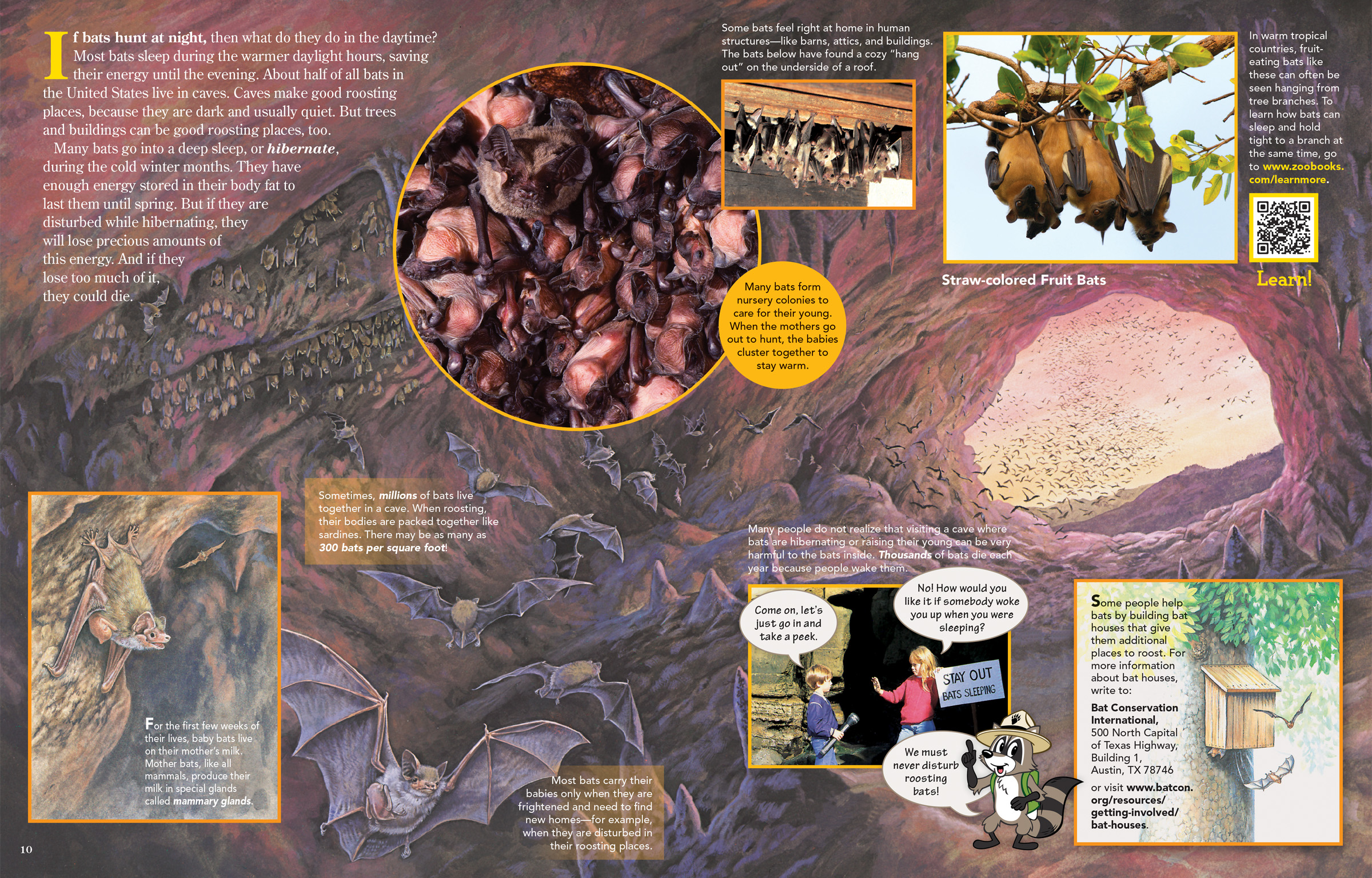
Bats Hunt at Night, and Sleep During the Day
ByIf bats hunt at night, then what do they do in the daytime? Most bats sleep during the warmer daylight hours, saving their energy until the evening. About half of all bats in the United States live in caves. Caves make good roosting places, because they are dark and usually quiet. But trees and buildings can be good roosting places, too.
Many bats go into a deep sleep, or hibernate, during the cold winter months. They have enough energy stored in their body fat to last them until spring. But if they are disturbed while hibernating, they will lose precious amounts of this energy. And if they lose too much of it, they could die.
Many bats form nursery colonies to care for their young. When the mothers go out to hunt, the babies cluster together to stay warm.
Sometimes, millions of bats live together in a cave. When roosting, their bodies are packed together like sardines. There may be as many as 300 bats per square foot!
For the first few weeks of their lives, baby bats live on their mother’s milk. Mother bats, like all mammals, produce their milk in special glands called mammary glands.
Most bats carry their babies only when they are frightened and need to find new homes—for example, when they are disturbed in their roosting places.
Some bats feel right at home in human structures—like barns, attics, and buildings. The bats below have found a cozy “hang out” on the underside of a roof.
In warm tropical countries, fruit-eating bats like these can often be seen hanging from tree branches. To learn how bats can sleep and hold tight to a branch at the same time, go to www.zoobooks.com/learnmore.
Come on, let’s just go in and take a peek.
No! How would you like it if somebody woke you up when you were sleeping?
Many people do not realize that visiting a cave where bats are hibernating or raising their young can be very harmful to the bats inside. Thousands of bats die each year because people wake them.
Ranger Rick: We must never disturb roosting bats!
Some people help bats by building bat houses that give them additional places to roost. For more information about bat houses, write to: Bat Conservation International,
500 North Capital of Texas Highway, Building 1, Austin, TX 78746, or visit www.batcon.org/resources/getting-involved/bat-houses.

